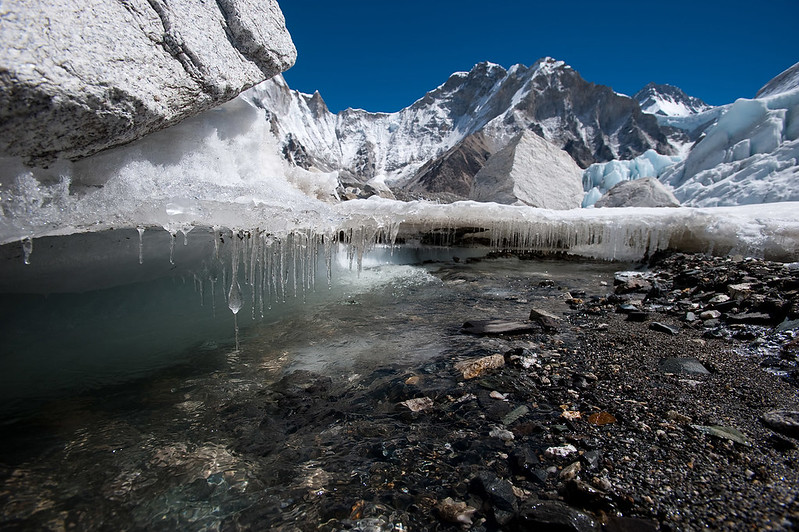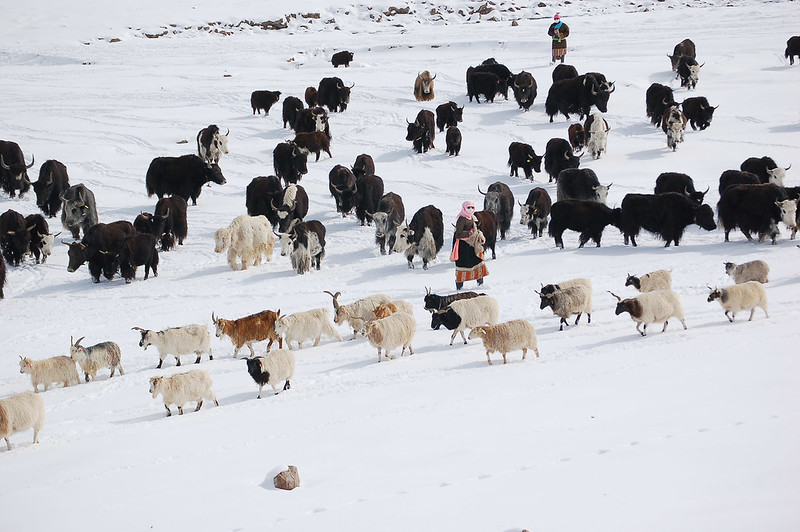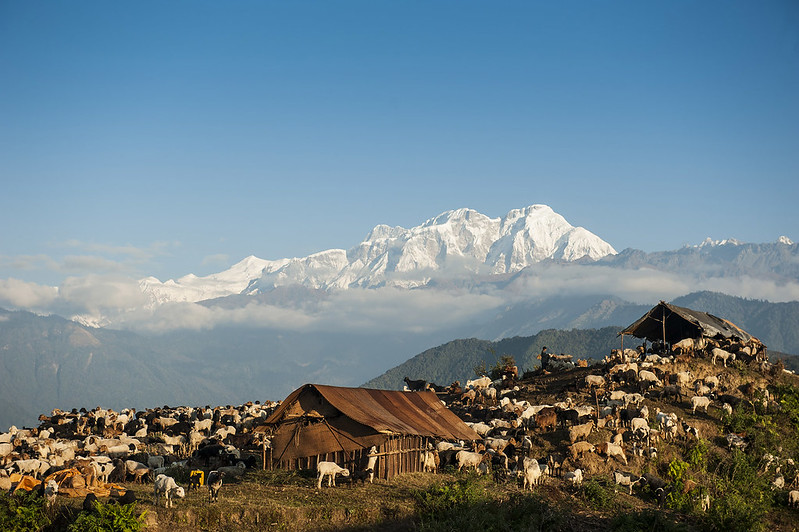A major new assessment report from eight-nation body, the International Centre for Integrated Mountain Development (ICIMOD), reveals the changes to the glaciers, snow and permafrost of the Hindu Kush Himalayan (HKH) region driven by global warming are “unprecedented and largely irreversible.”
The study, Water, Ice, Society, and Ecosystems in the Hindu Kush Himalaya (HI-WISE) draws on recent scientific advances to map for the first time the links between the cryosphere, water, biodiversity and society in the region, charting the impacts of rapid changes in glaciers and snow on people and nature.
The report finds that glaciers in the HKH could lose up to 80% of their current volume by the end of the century, on current emissions trajectories. Snow cover is projected to fall by up to a quarter under high emissions scenarios – drastically reducing freshwater for major rivers such as the Amu Darya, where it contributes up to 74% of river flow, the Indus (40%) and Helmand (77%). The extent of frozen ground (permafrost) is decreasing, which will lead to more landslides and problems for infrastructure at high elevation.

Pictured above: Water forms under Nepal's Khumbu glacier as the ice melts. Photo: Alex Treadway/ ICIMOD
The study warns that communities and governments need urgent support and finance to prepare for the accelerated impacts on societies and nature that cryosphere changes will cause as temperatures rise, with current funding flows to the region woefully insufficient to the scale of the challenges the region will face. Scientists predict devastating consequences for water and food security, energy sources, ecosystems, and the lives and livelihoods of hundreds of millions of people across Asia, many of which will be beyond the limits of adaptation.
The report’s publication comes after cryosphere scientists at the Bonn Climate Change Conference sounded the alarm at the speed and scale of ice-melt worldwide, which is far outpacing worst-case scenario projections from the IPCC; with a new paper showing Arctic waters could lose all their summer-end sea ice as early as 2030.
Izabella Koziell, ICIMOD’s Deputy Director General, said, “Climate scientists are reeling from observations in the Arctic and the anomalies we are seeing elsewhere in the cryosphere. The glaciers of the Hindu Kush Himalaya are a major component of the Earth system. With two billion people in Asia reliant on the water that glaciers and snow here hold, the consequences of losing this cryosphere are too vast to contemplate. We need leaders to act now to prevent catastrophe.
“There is still time to save this critical region, but only if fast and deep emissions cuts start now. Every increment of a degree of warming matters to glaciers here and to the hundreds of millions of people that depend on them. As this study shows, alongside urgent mitigation action, we need adaptation funds and programmes and ecosystem restoration to be rapidly scaled up, and the mobilisation of finance for losses and damages.”
Ice and snow in the Hindu Kush Himalaya are an important source of water for 12 rivers that flow through 16 countries in Asia, providing freshwater and other vital ecosystem services to 240 million people in the mountains and a further 1.65 billion downstream.
Film: Expedition To The Third Pole
Vulnerable mountain communities are already experiencing major adverse impacts – including disasters causing loss and damage to lives, property, heritage and infrastructure, driving displacement and leaving psychological impacts.
Amina Maharjan, Senior Livelihoods Specialist at ICIMOD, said, “Current adaptation efforts are wholly insufficient to meet the challenges posed by cryospheric change and the extreme events that we now know with a high degree of certainty will hit these already vulnerable communities with greater magnitude and complexity. We are extremely concerned that without greater support, these communities will be unable to cope. Adaptation needs to be urgently scaled up.”
The study finds that availability of water in the HKH is expected to peak in mid-century, driven by accelerated glacial melt, after which it is projected to decline, with variability in meltwater from glaciers and snow resulting in huge uncertainty for mountain communities and large lowland populations.
Floods and landslides are projected to increase over the coming decades, with slow-onset hazards, such as sedimentation and erosion and fast-onset hazards such as glacial lake outburst floods (GLOFs), occurring often concurrently in the same catchments. 200 glacier lakes across the HKH are deemed dangerous, and the region could see a significant spike in GLOF risk by the end of the century. Coupled with increased population growth and economic activity in the region, the exposure to these hazards poses the risk of increased loss and damage, including population displacement.
The report found that the effects of the changing cryosphere on fragile mountain habitats are particularly acute, with cascading impacts reported in most ecosystems and affecting most inhabitant species. Species decline and extinction have already been reported, along with range shift of species to higher elevations, ecosystem degradation, decrease in habitat suitability, and invasion of alien species.
With 67% of the HKH’s ecoregions and 39% of the four global biodiversity hotspots located in the HKH remaining outside protected areas, nature is particularly vulnerable to climate impacts.

Pictured above: Two herders and a cabinet of yaks move through snowy highlands in southern China. Pastoral livelihoods are challenging but crucial to local economies throughout the Hindu Kush Himalaya. Photo: Wu Ning
Professor Saleemul Huq, Director of the International Centre for Climate Change and Development, Bangladesh, and on the Advisory Board to COP28, said, “In all three pillars of climate action – in mitigation, adaptation and loss and damage – we are at a standstill or going the wrong way; while the consequences of inaction are accelerating by the day. This report zeroes in on the devastating implications this will have on two billion people and the nature that rely on the water and ecosystems of the Hindu Kush Himalaya. It is beyond time that Governments, donors and agencies step up: to exit fossil fuels and honour their commitments to limit warming, to help communities adapt to those temperature rises already locked in and to compensate them for property and ways of life that have already been lost.”
Pam Pearson, Director of the International Cryosphere Climate Initiative (ICCI), said, “There have been huge strides in cryosphere science since the Paris Agreement was agreed. We understand today what we did not fully appreciate then: that ice responds much more quickly and irreversibly to temperature rises than previously thought. It’s crucial for governments and civil society to be aware of the extreme implications of even just 1.5 °C degrees of warming on the cryosphere. Because it is clear that billions of people’s lives now depend on our urgent pursuit of very low emissions pathways. This is the only way to slow or avoid catastrophic impacts.”
Cover image by Jitendra Raj Bajrachary







